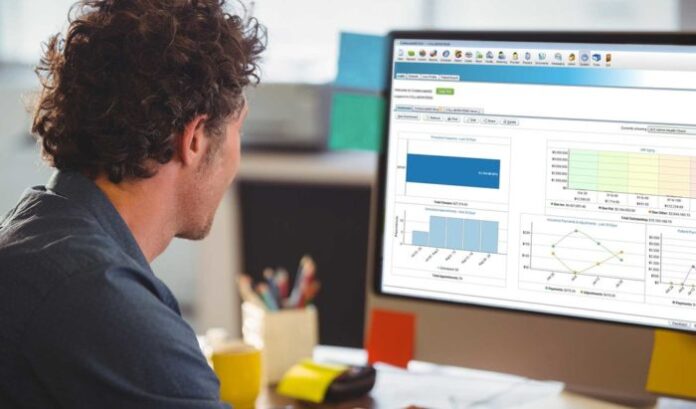Performing basic billing tasks is much more complicated when you use a so-called “paper system” or any other kind of generic billing application designed for any office. Especially for doctors, having in mind the complexity and seriousness of their profession and the volume of work. On the other hand, there’s an invention that changed the perspective of many medical workers regarding this – a medical billing system. This concept helps doctors and nurses manage their collections, generate some personalized financial reports and produce detailed bills for their clients and patients.
If the medicine is what you do for a living or you have your own clinic, do you already use any software like this? Well, even if you don’t, you can try – you don’t have anything to lose, right? But in order to decide whether you’d like to keep it up with this technology or not, you need to find out more about it. Let’s go through some of the most important aspects and benefits that might convince you to give it a try.
How do these functionate?

Medical billing programs and software are there to simply manage billing in the medical sector – as their name says. Hospitals, clinics and similar offices use these kinds of applications to centralize and automate essential business processes, such as accounts, payment processing, patient data exchange, access to all necessary documents, management, electronic claims, collections and financial reports bases. These solutions typically allow you to observe patient demographics, background data and insurance information. This, of course, would be much more difficult if we were in those good old times where the paperwork was the only available solution, which is why many clinics and hospitals nowadays decide to implement it in their systems. The programs are also closely related to chiropractic, claims management, dental, electronic medical record and health management software. Also, they’re often connected with the one dedicated to clinical analysis laboratories, medical consultation and meetings.
What are the costs of programs like this?

Well, the prices for implementing billing software like this into your business will mostly depend on a couple of things. Many providers offer different kinds of plans or packages as there are various types of services needed and various workloads. If there are many patients that your clinic is dealing with, your team will need some more complex plans and programs, as there are so-called “per-provider” options. However, doctors who have less patients assigned to them, for example, the specialists mostly find the “per-encounter” program more convenient to use. Therefore, it matters what exactly you do and how much work you have to do.
One more factor that could be significant are some additional characteristics needed. For example, if the plan includes the credit cards system or the system that works as a reminder for the appointments, it’s logical that it’ll require more money than usual ones without those features. This applies to all extra features. In case you’re interested to read more about this, we suggest you to take a look at this cost guide by CostHack.com.
Maybe the best thing about this whole system is the possibility to run it as a web-based program. This functionates as a platform which is available through some kind of remote server, so the clinic workers can enter it and use it from any device that has an internet connection and that is actually authorized.
What are these programs useful for?

1. So, as we previously stated, there are numerous advantages of introducing concepts like this to your medical business. What matters the most? Everything. It’s necessary to have good cooperation and communication with providers whenever you need it, which also helps when it comes to the payment segment. And not only that. Regardless of what the problem is, it’s much easier to resolve it when things are automated, computerized or simply when the machine does it for you. With each passing day we have a possibility to achieve some additional comprehension of these systems, and this, again, might be a powerful weapon for improving the business and making it easier for you and for everyone you work with.
Billing softwares often includes some additional features that enable doctors to have all their patients registered at one place. No hassle, no organization problems, just order. That’s actually the first thing one needs to take into consideration – to have all their clients in their database and be provided with all the necessary information at their fingertips. If you do this separately, the whole process might take much time and also much more effort. Using one interface for both processes is one of the best options you might have.
2. Although their name has to do with payment, it’s not the only attribute that these applications possess. Apart from payment details, they will simply keep all valuable details regarding specific diagnosis, medicines and information at the same place.
3. A particular advantage is also that patient data is available in any department at any time. Unlike paper records and documents, which can only be accessed in one place at a time, these are accessible to any authorized personnel in multiple departments and health centers. This means that the test results, diagnostic images and the patient’s relevant health history can be entered and shared with the medical team in real-time, instantly, just like payment details.

4. It’s beneficial for patient safety and privacy support, as it needs to meet industry security and privacy standards. This includes secure database storage with multiple backups to ensure files are never lost and also contingency planning with redundant backups. This is a key point to ensure the recovery of billing records in the event of a localized natural disaster or other specific interruption of the health center functioning.
The more seriously we treat our clients, the more success we’ll achieve. These applications improve the personalization of medical care and allow the matter of payment to be addressed proactively. They also allow health institutions to better anticipate trends and outcomes of patient care in populations and regions. And this, together with the reputation of the institution, is what will keep the attention of the possible clients and enhance patient care and operational efficiency for the improvement of the entire health industry.









